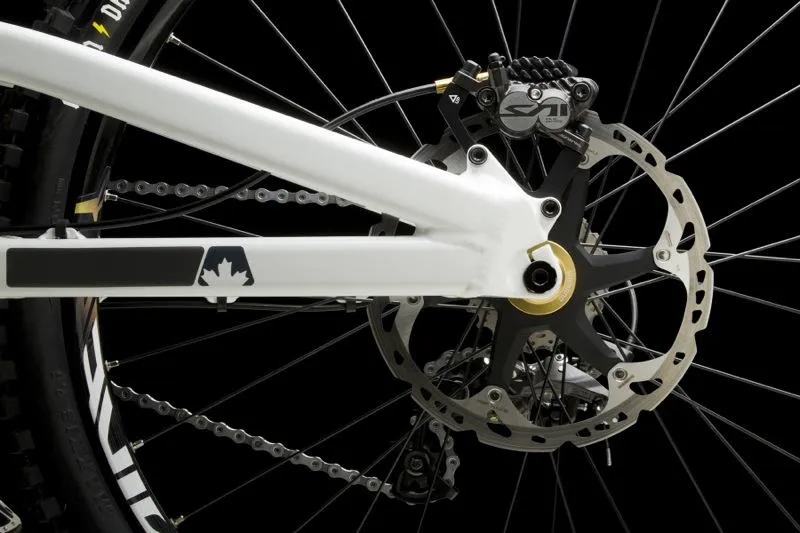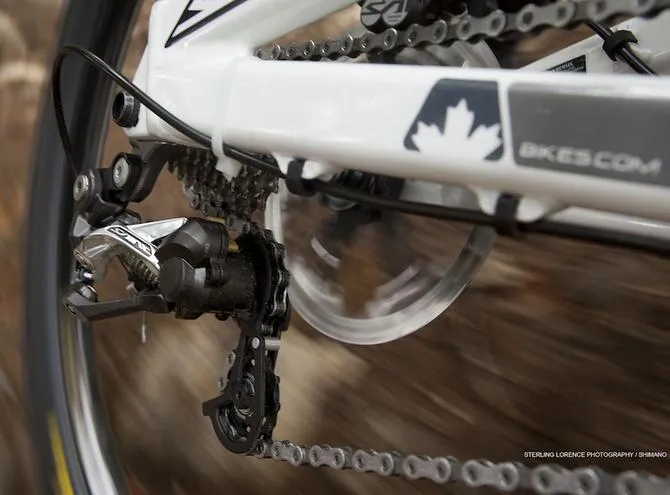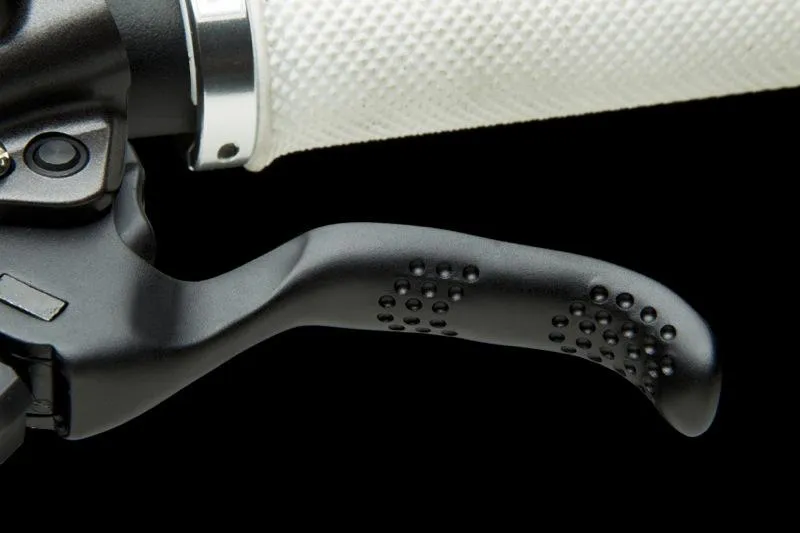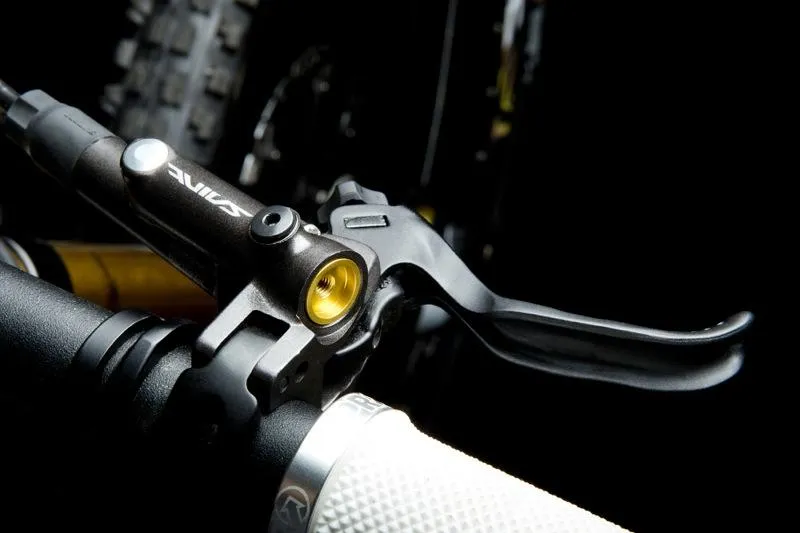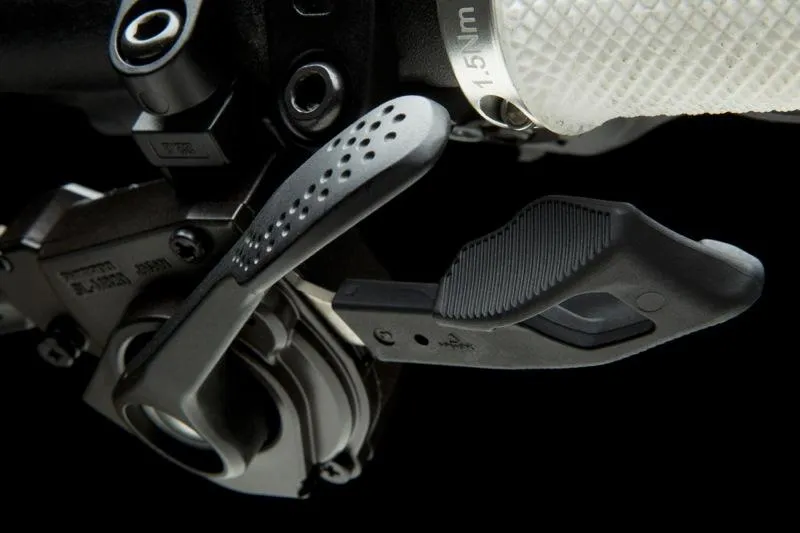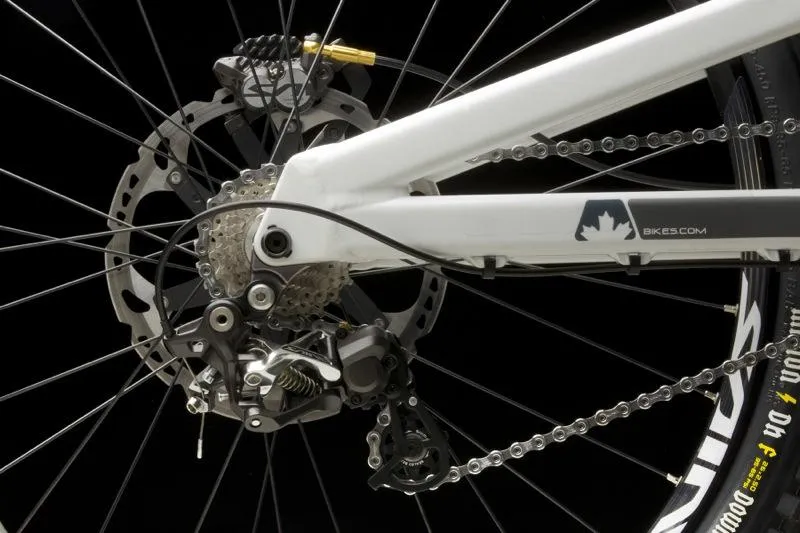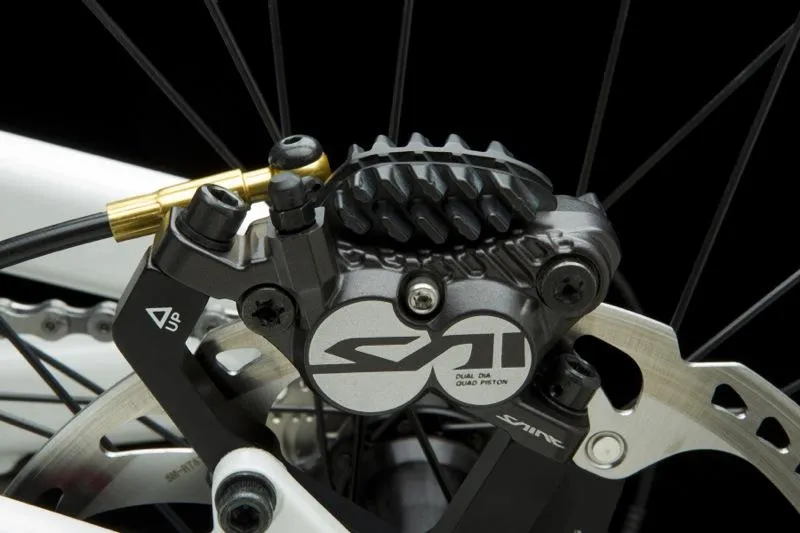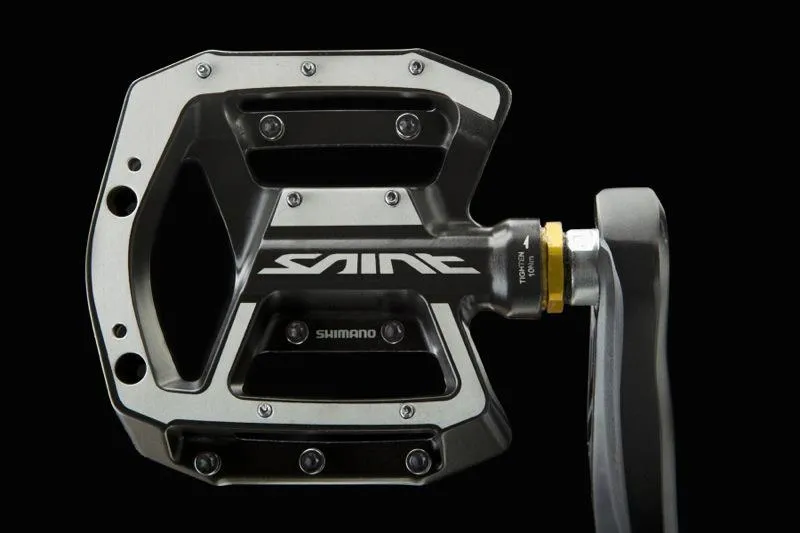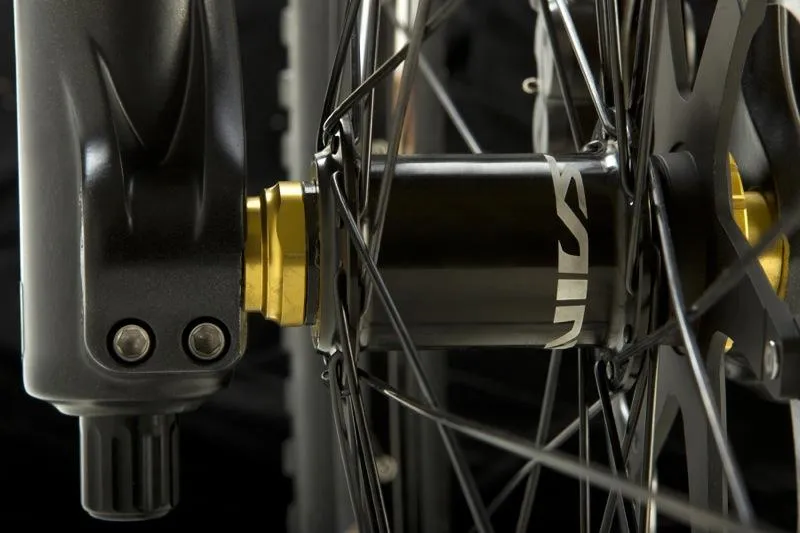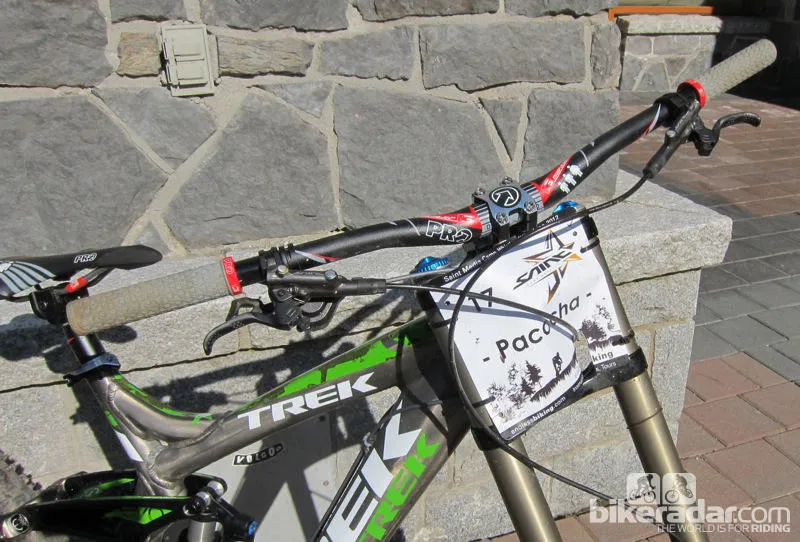Shimano introduced their third-generation Saint groupset in the most fitting setting possible, Whistler Bike Park – a real test for any gravity oriented component.
On the kickoff morning of Shimano’s Saint M820 media camp, Aaron Gwin took his second World Cup downhill win of the 2012 season – on the new Saint group. It was quite an impressive way for Shimano to make their first impressions to the press, especially considering that M820 has been redesigned to cater to gravity racers first.
So, good enough for Gwin, good enough for us, right? Unfortunately, the groupset as a whole wasn’t quite ready for us to try, due to delays in chainguide and rotor production. However, despite a couple of glitches, our initial experience proved the revamped, downhill-specific groupset has the same potential for regular gravity riders as it does for Shimano’s elite level racers and freeriders.
On the trail
Shimano’s development process for Saint has been impressive – the M820’s release was put on hold for a year so that Aaron Gwin could give feedback and win a gang of World Cups on prototypes. But, as always, the true test is what happens out on the trail.
Bike parks such as Whistler are hard on bikes and components because of the relentless downhill terrain and the sheer number of miles you can rack up in a matter of days.
Over the course of our testing, we did experience some unexpected issues with the new M820 Saint – a noisy B-knuckle, inconsistent brake lever feel and a bent pedal spindle.
The mech
The bikes used at the camp varied hugely. Rentals provided by Shimano included Norco Aurums as well as Trek’s highly acclaimed Session 9.9 carbon, as piloted by Gwin, and some journalists had shipped out personal bikes. This meant a variety of different mech hangers and pivot locations needed to be considered during mech setup.
Our initial impressions of the new Shadow Plus Saint mech were good. The clutch-style system employed to tension the cage and reduce chain slap lowered noise hugely, leaving us hammering rough lines in stealthy fashion.
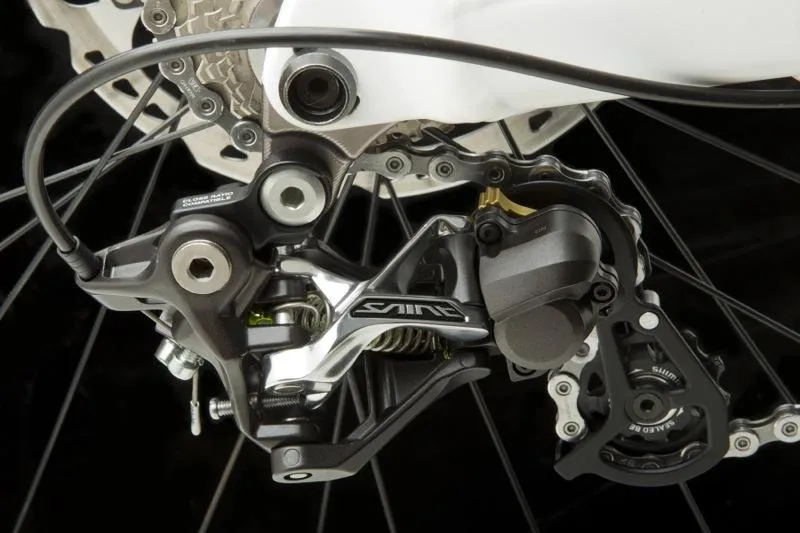
The switch for the Shadow Plus clutch on the new Saint
As the first day progressed though, many of the bikes began to start banging and knocking due to the derailleur B-knuckle contacting the bottom of the chainstay. Some gave a constant tapping while others only sounded on more severe hits. Shimano’s tech team remedied this very quickly though, making some minor adjustments to the B-tension screw and adding more tension to the Shadow Plus system after its initial bedding-in period.
Our following runs had us free of chain slap and, on most frame designs, completely free of B-knuckle knocks. For those that did still experience some contact, it was only on the biggest of hits. Shifting remained consistent and precise, even when we were slamming through the gears on the bumpiest trails.
The shifter
From the first pedal stroke, we knew that Shimano had nailed the rider compartment ergonomics of the group. They claim a 37 percent reduction in effort on the thumb lever and our experience supported that statement – it was noticeably easier. Shifting remained crisp, positive and, most significantly, lighter throughout our test period. Shimano have achieved this by using the Dyna-Sys design and a lever that’s 6 percent longer.
The cable release trigger is a whopping 10 percent longer. Although the improvement in feel isn’t quite as striking as that from the thumb lever, it’s still easy to actuate and seems to resist misshifting over rough terrain should you rest your finger on the lever or go for a gear while blasting over bumps. We were thoroughly impressed by this feature.
The brakes
We liked the brake lever ergonomics. Once actuated, the light yet powerful feel we’ve become accustomed to courtesy of the latest XTR Trail brake is present and correct.
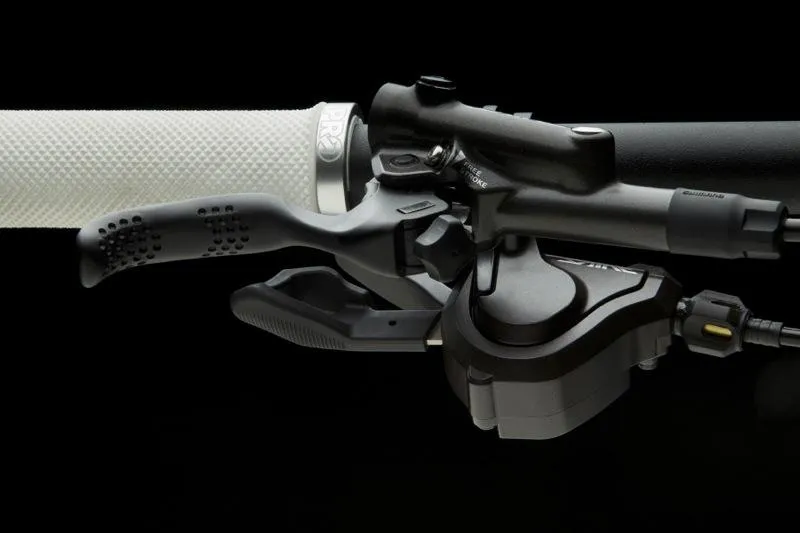
The right brake and shifter in tandem
In an attempt to set a rider up for one-finger braking, though, Shimano have lost some of their range of adjustment. Our smaller hand size barely put us into the usable range of the lever’s reach adjuster. And because the lever is so short, there wasn’t much we could do about it.
While we were able to achieve our ideal initial setup by bottoming out the reach adjuster, that led to the most serious problem of our test – inconsistent brake lever feel. In the end, we were putting the Servo-Wave mechanical leverage adjustment at its highest point, which gave a mushy feel and seemed to open the lever up to additional sensitivity and the need for a perfect bleed.
The Saint’s brake performance was mind-blowing in terms of both power and modulation, but we experienced regular issues with brake pump on one set of sample stoppers. On long bouts of constant braking – anything up to two minutes or so – our levers would pump up and push out a noticeable amount. A quick release of the lever would reset its contact point, until the next bout of extended braking.
Shimano’s on-site techs attributed the change to air caught in the lines, and made three bleed attempts before having to swap the brake out. They then bled that brake. They didn’t, however, do a ‘vacuum’ bleed, which they did suggest at one point. That said, on our other set of sample brakes, we only experienced brake pump once, on the rear, while riding one of Whistler’s more extreme trails.
Over our three-day test period we did our best to give Shimano the benefit of the doubt, as many of the Saint parts arrived just hours before the camp began. The three-man crew led by Shimano Canada’s head tech, Ben Pye, worked until 3am the night before test day to get everything ready.
However, a rushed brake bleed can be excused once or twice, but three times with two different brakes is pushing it. We must stress that this probably wasn’t the techs’ fault, either, as the camp also served as their introduction to the group – it’s excusable that they might not have had the intricacies of the new parts completely nailed. Nonetheless, we left the camp with the unresolved issue on one set of brakes.
Back to the modulation, then. After receiving rider feedback from some of their top athletes, Shimano wanted to increase the amount of modulation on offer and remove the more on-off feel the older Saint brake gave. Power is now delivered in a far more controlled fashion – great for steep technical descents.
The feel certainly took time to adjust to, and opinion is still divided as to whether we prefer the more punchy feel of the older Saint brake. Regardless, the control is impressive.
The pedals
The new Saint PD-MX80 pedal stands out as one of the highlights of the groupset. Although one tester managed to bend a pedal, it’s worth bearing in mind just how extreme the terrain and impact forces were. All our other samples made it through the test days unscathed, despite numerous pedal-to-rock incidents.
Performance was impressive. The platform is 3mm wider and 8mm thinner than on the previous DX pedal, but the real story comes from the excellent steel pins on the MX80. They’re adjustable in height (via washers) and, thanks to the well-positioned nine pins per side, grip is excellent. Bearings appear to be of XTR or Saint quality and smoothness standards.
Aside from the freak failure, we came away very happy with the riding performance of Saint’s new flats.
The cranks
It was no real surprise to experience the same flawless performance from the new Saint cranks as we enjoyed on the old. Stiffness and strength are still hard to beat, and it’s hard to fault the straightforward, zero-faff fitting system.
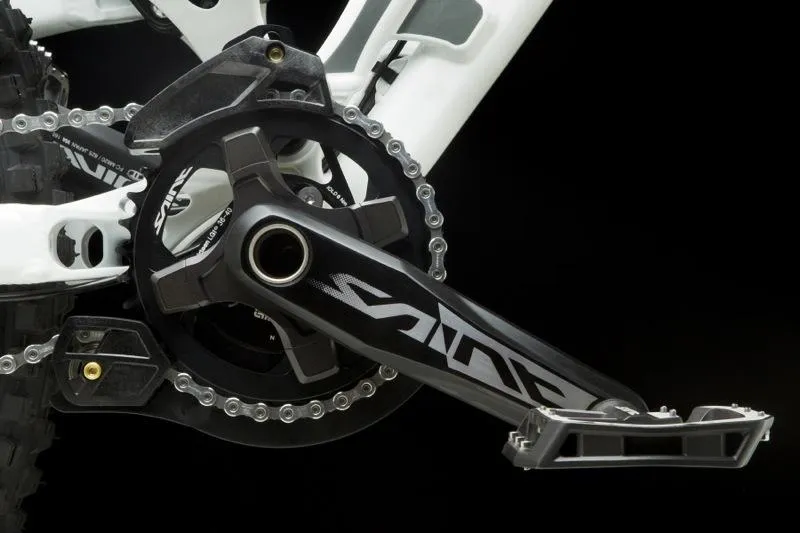
The M820 crank with an e*thirteen chainguide
Our only gripe (and it’s barely worth mentioning) is with the aesthetics. Although initially striking, get the cranks turning and a Five Ten rubbing and the graphics are soon worn away. We’d love to see a polished face, just as the XTR cranks offer.
The hubs
The new Saint hubs are said to be lighter, and now come in a 12x142mm standard to accompany the 12x150mm axle length. We had no real performance issues with them, but will be testing them over a longer period before reporting back with the full lowdown.
Long-term plans
Unfortunately, we were unable to ride the new chainguide and Ice Tech rotors, with their finned aluminium cores. As soon as test samples arrive, we’ll be sure to get them straight onto our bikes for some long-term trials. We’ll also bang out a load more runs on the brakes before offering our final opinion and verdict, so stay tuned.
